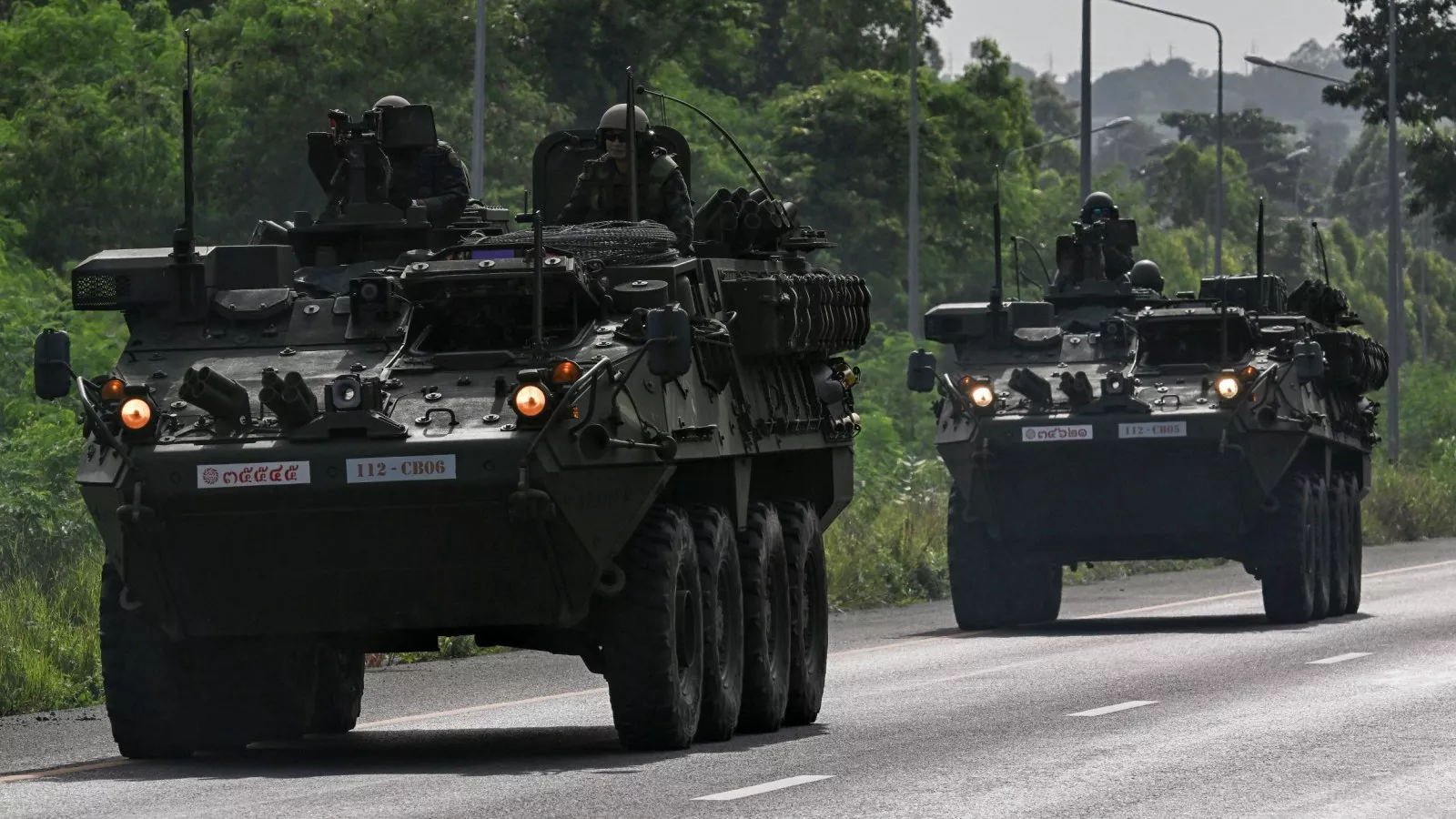A deadly skirmish has erupted along the Thai-Cambodian border, driven by territorial disputes dating back to colonial-era French border delineations over a century ago. The renewed violence, which began on July 24, 2025, has resulted in over a dozen fatalities and forced the evacuation of more than 100,000 civilians.
This conflict sees Thailand, a seasoned U.S. ally with a robust military, clashing with a less-experienced Cambodian force that has increasingly leaned on Chinese support.
Thailand maintains a substantial military advantage in both manpower and hardware. With over 361,000 active-duty personnel, three times Cambodia’s number—and access to superior air and ground weaponry, Thailand’s military is among the best-equipped in Southeast Asia. The Lowy Institute ranks Thailand 14th in regional military strength, far ahead of Cambodia at 23rd. These differences reflect broader disparities in national population, economic power, and historical development.
Thailand’s military has long played a central role in national politics and remains deeply embedded in a conservative establishment. A U.S. treaty ally since 1954, Thailand supported American operations during the Vietnam War and remains a significant non-NATO ally.
The annual Cobra Gold joint military exercise with the U.S. underscores their close defense ties. Nonetheless, Thailand has also diversified its partnerships, developing domestic arms capabilities with assistance from countries like Israel, Italy, and South Korea, and expanding its relationship with China.
China Backs Cambodia’s Weaker Military as Thailand Dominates Air and Ground Capabilities
Cambodia’s modern military was only established in 1993, making it relatively young and limited in indigenous capabilities. It relies heavily on China for military equipment, training, and strategic infrastructure. A symbol of this deepening alliance is the Chinese-funded Ream Naval Base, which analysts suggest could support Chinese aircraft carriers.
The 2024 Golden Dragon joint exercise further cemented military ties, with both countries emphasizing their “iron-clad” friendship and strategic cooperation.
Thailand holds a commanding lead in military hardware. Its air force fields advanced Gripen fighter jets and a range of U.S.-made aircraft, while Cambodia has no combat-ready air force. On land, Thailand possesses modern Chinese VT-4 tanks, American artillery systems, and an array of helicopters.
Cambodia’s arsenal consists of aging Soviet- and Chinese-made tanks and artillery, which are less advanced and more limited in number. These disparities leave Cambodia outmatched in both ground and air operations.
Cambodia’s Terrain Advantage Complicates Thai Strategy Amid Rising Regional Tensions and Alliances
Despite its military inferiority, Cambodia holds a geographic advantage in the disputed border region, which may complicate Thai operations. According to military analysts, the terrain facilitates Cambodian access and makes Thai incursions more vulnerable to traps and mines.
To mitigate these risks, Thailand is expected to rely heavily on its superior air power and long-range artillery, rather than committing ground troops into potentially hazardous terrain.
The ongoing border conflict highlights broader regional tensions and shifting alliances in Southeast Asia. While Thailand remains a dominant middle power with traditional ties to the U.S., Cambodia is increasingly viewed as a Chinese proxy.
The outcome of this conflict may not only shape bilateral relations but also influence the strategic balance in the region. With both sides entrenched and backed by powerful allies, a diplomatic resolution remains uncertain, and further escalation could destabilize the broader Indo-Pacific.

Leave a Reply